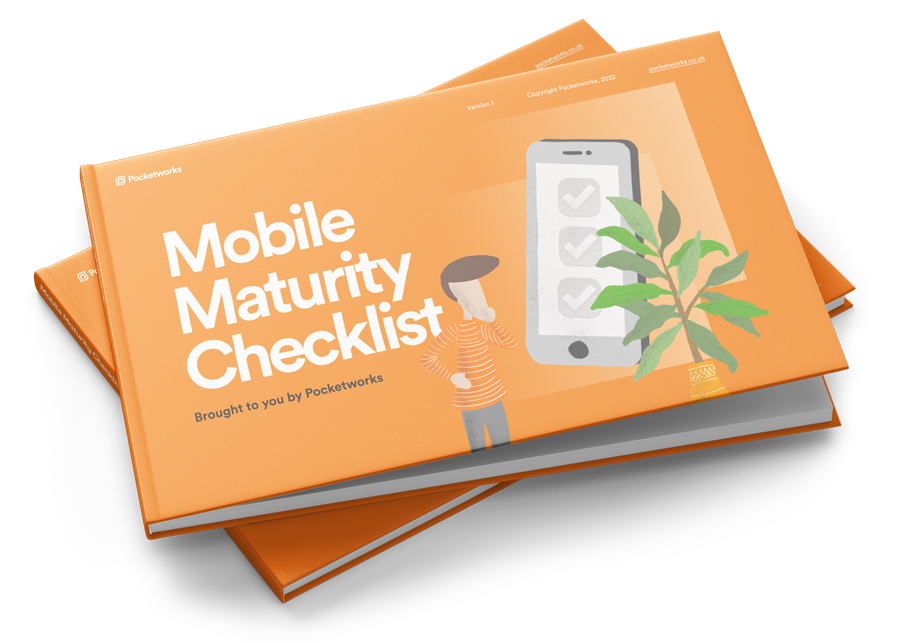AI is everywhere, and the pressure to add it to your app or product can be intense, especially when CEOs are looking to get ROI from AI. Whether it’s investors asking about your AI roadmap, or competitors touting their new AI-powered feature, it’s easy to get caught up in the noise.
We’ve felt it too. Over the last few years, we’ve been exploring how AI can enhance the products we build and manage for our clients. So, what was our first big lesson learned?
Don’t just add AI because you can. Add it because it makes something better.
This lesson is compounded by the recent MIT report stating that 95% of generative AI initiatives are failing. It’s really important to set yourself up for success, and that starts with picking the right problem to solve.
For us, that lesson came into focus while prototyping a new feature for the Carbs & Cals app. To help you avoid a similar fate with AI, let’s start with a lesson in what not to do.
Initial AI prototype: A chatbot with no purpose
Back in 2023, our starting point was a hackathon at one of our company retreats. We wanted to experiment and asked ourselves,
“What if users could just say what they ate, and the app would log it for them?”
So we built a prototype chatbot to enable them to do this. A user could type "I had a latte and two hobnobs," then we’d use an LLM to extract food names and quantities, then match them against the excellent Carbs & Cals food database.
Technically, it worked well. The AI could pull out structured data from messy, human inputs. It handled typos, understood synonyms, and even parsed some voice input. But once we played with it for a bit, we had to ask: was this actually solving anything for our 70,000 monthly active users? Would it help drive up revenue and create “sneeze-worthy” organic growth (to quote Seth Godin from his Purple Cow book)?
The answer was, sadly, no.
It was a cool demo. But when we thought about the core user experience, it didn’t make things easier. If anything, it added friction and felt half-baked. The existing food search was already fast and reliable. The chatbot was slower, less predictable, and overlapped heavily with existing functionality.
To make matters worse, we risked confusing users who might expect it to behave more like ChatGPT by answering questions, giving advice, or even planning meals. Since this was an R&D prototype, we weren’t looking to develop that level of sophistication - and didn’t even have the clean data or infrastructure to support it.
So, after all that work, we scrapped the idea.
Then, we went back to the drawing board and followed our standard, more rigorous approach in selecting what features to give to our users.
Listening to user feedback to find a real problem
If you build digital products or apps, you probably know how to prioritise your roadmap. You look at things like: What’s the business strategy we need to align to? What are users struggling with? What did they wish the app did better?
We reviewed survey results, Appero data, feedback from support tickets, and App Store reviews. One problem jumped out at us: food logging was time-consuming. Since 31% of our user base logs food, improving this would make life better for over 150,000 people each year.
Some users had suggested a way to scan their plate and automatically log what was on it. Others said they wanted to spend less time searching through the database. The idea of making logging quicker, especially for repeat users, kept coming up.
So we decided to focus on that.
This took us in a new direction: plate scanning.
Solving a real problem with AI: From chatbot to plate scanning
We re-scoped the feature. Instead of free-form chat, we built a tool that lets users snap a photo of their meal. The app then uses AI to identify the foods in the image.
Once identified, those foods are matched against the existing Carbs & Cals food database. From there, the user can review the list, adjust portion sizes, and save the entry.
It was a more constrained problem, and therefore much easier to solve.
Now, we weren’t trying to build a general-purpose AI. We were trying to remove a specific bit of friction from the user experience.
So, what can you learn from all this?
How you should incorporate AI in your product: What we learned
In 2025, most leaders are exploring AI. But useful, reliable features don’t start with technology; they start with real-world problems.
- Like all good features and products, invest in framing meaningful problems to solve with AI. Think saving time, or giving customers super-powers.
- Constraints are your friend. Don’t try to build an all-powerful chat experience if you can run at a simpler problem to start with.
- Shipping something that looks impressive but doesn’t get adopted by users is still a failure. It’s much better to analyse your voice of the customer and business strategy, then invest your AI R&D budget in something well aligned to that.
Hopefully, this will help you avoid any false starts in using AI to improve your mobile customer experience. For us, it was a good reminder to cut through the noise and focus on what matters. Even though it took a bit of iteration, the results yielded a feature that users actually want to use. Not because it’s powered by AI, but because it saves them time.
If you're trying to figure out how best to incorporate AI into your product (or whether you should at all), we'd love to chat! Drop us a line and we'd be happy to discuss in more detail.




